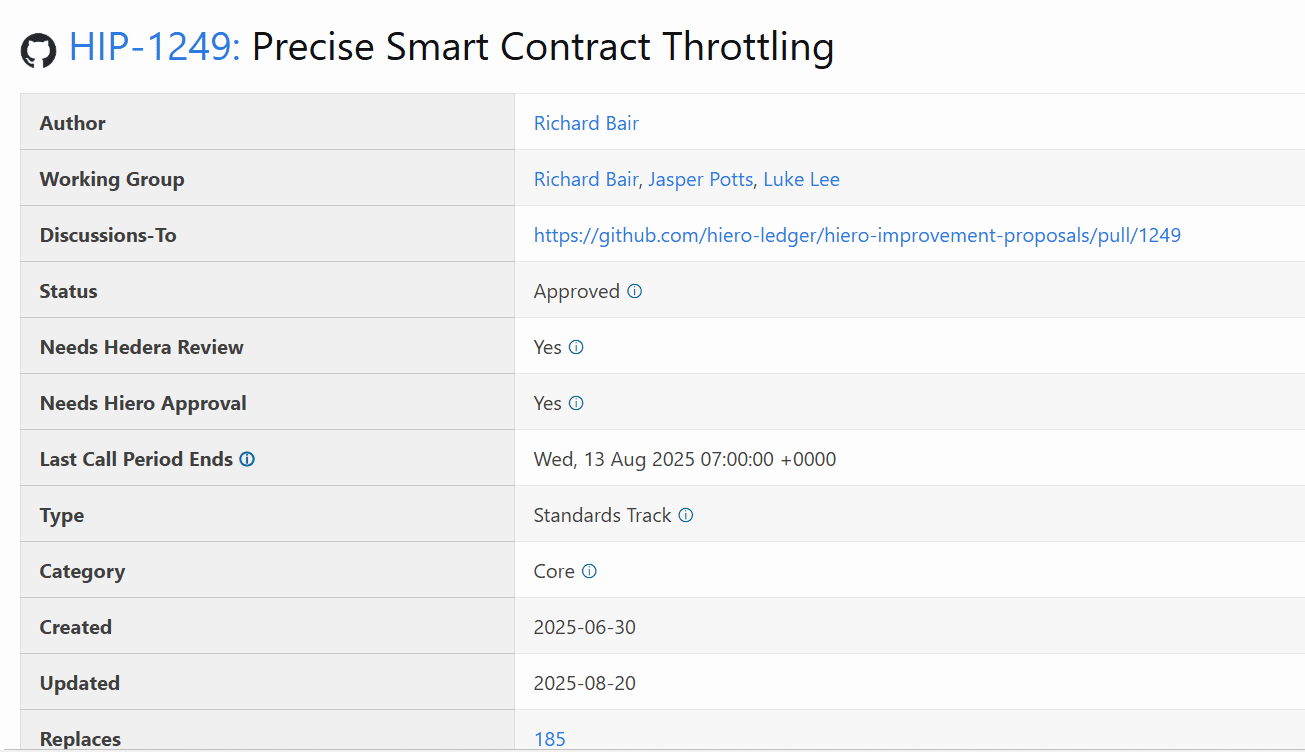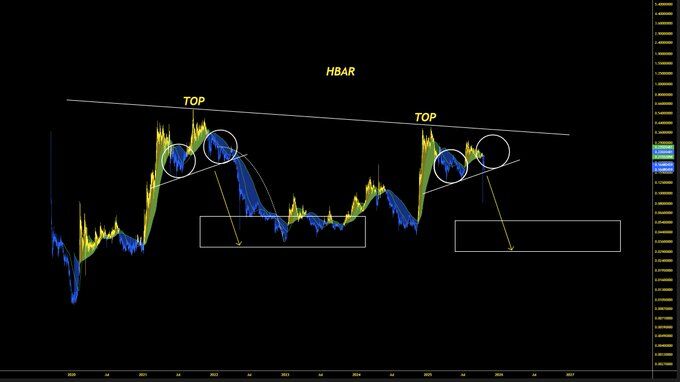Hedera advanced its open-source shift today with fresh emphasis on Hiero—the Linux Foundation Decentralized Trust (LFDT) project that now powers the network—highlighting public governance, identity tooling, and smart-contract upgrades moving from proposal to implementation. In an interview published today, Hedera COO Shyam Nagarajan and LFDT’s Daniela Barbosa detailed how Hiero’s vendor-neutral model operates and why Hedera fully migrated to the codebase earlier this year.
They reiterated that Hedera has run entirely on Hiero since February 2025, positioning it as the largest public network on an LFDT project. The pair underscored transparent processes—open meetings, recorded sessions, and a formal improvement-proposal path—for changes that affect both Hiero and Hedera. The remarks come alongside a one-year retrospective from LFDT charting elections, contributor growth, and tool realignments under the Hiero brand.
Hedera framed these steps as hardening the project’s neutrality and contribution pathways. LFDT’s “Hiero Turns One” update lists expanded Technical Steering Committee representation following mid-2025 elections, while Hedera’s own recap sets the timeline: full code donation in September 2024 and complete cutover to Hiero in early 2025. Together, they map a governance arc from donation to day-to-day network operation.
LFDT governance: elections, public process, neutral stewardship
LFDT said Hiero held open elections in June and July 2025 to broaden its Technical Steering Committee, adding seats for contributors and end users. That move formalized wider stakeholder input and complemented public calls and recorded sessions that document design debates and decisions. The committee now oversees roadmap priorities in a foundation-run forum rather than a single-vendor structure.
In parallel, Hedera and LFDT have kept the policy narrative visible through conference firesides and webinars. A HederaCon session and a September 17, 2025 LFDT webinar walked through why the codebase moved, how proposals flow, and what “graduation” within LFDT means for release management. These materials anchor the governance changes in public venues instead of private briefings.
Hedera’s blog adds context on the transition’s impact for contributors: moving design work into HIPs (Hiero Improvement Proposals), shifting decision records into public repositories, and making the network’s core code reviewable and forkable under the Hiero organization. The HIP index documents proposal states across draft, review, and final phases.
Identity stack: HIP-762 and ACA-Py plugin bring AnonCreds to Hedera
On identity, today’s interview again singled out HIP-762, which defined Hedera as a Verifiable Data Registry for Hyperledger AnonCreds. The specification enables issuing and verifying privacy-preserving credentials on Hedera, expanding use cases that demand selective disclosure via zero-knowledge proofs. The HIP originated in 2023 and seeded downstream tooling work through 2025.
LFDT’s March 2025 engineering note confirmed releases that extend Aries Cloud Agent Python (ACA-Py) with a Hedera plugin, implementing the HIP-762 path from spec to software. The update positioned the plugin as the on-ramp for building AnonCreds applications that anchor registries on Hedera. Community posts mirrored that progress for developers evaluating DID and credential workflows.
A June 18, 2025 technical deck from DSR Corporation further detailed the plugin architecture and the AnonCreds privacy model for verifiers and holders. Combined, the spec, plugin, and documentation close the loop between governance decisions and production-grade identity components on the network.
Developer changes: CLI rename and precise smart-contract throttling
Tooling also moved under the Hiero banner. LFDT announced on October 9, 2025 that Hedera CLI is transitioning to Hiero CLI, aligning names and distribution with the foundation-hosted codebase. The post describes extensibility goals and consolidates documentation in LFDT channels, reflecting a broader shift away from vendor-branded tools.
Smart-contract execution is getting a throughput-focused update via HIP-1249. The proposal replaces coarse gas-per-second throttling with an operations-per-second model, aiming to unlock higher contract throughput while staying compatible with Ethereum tooling. Developer channels and Hedera Devs reiterated the change through mid-2025 as it advanced toward rollout.

Mirror node release notes now reflect HIP-1249 behavior, including a clearer gas-refund model that returns 100% of actual gas used and aligns API reporting with execution. That implementation detail matters for dApps that reconcile costs and for analytics pipelines that read mirror data.
What it means: open source as the operating model, not a press line
Hiero Ledger on GitHub now holds Hedera’s core repos under LFDT. Contribution paths are public. Issue tracking is public. The workflow is transparent. HIPs drive changes. So, “open source” exists in code, not just in statements.
Public updates mark the cadence. Hedera and LFDT share talks, webinars, and posts. They timestamp elections, specs, and releases. These records create traceability. They also show who decided what, and when.
The takeaway is operational. Governance looks mature. Shipping continues. HIPs advance. Identity plugins land. Throttling gets refined. Tooling unifies under Hiero. Developers and institutions get a clearer, steadier platform.
Analyst flags repeat “top” pattern on HBAR as chart echoes prior cycle
An analyst on X, @MASTERBTCLTC, posted a multi-year HBAR/USDT chart that marks two prior “TOP” points and sketches a third attempt beneath a long descending trendline. The visual pairs price (yellow) with a secondary overlay (blue) and highlights circular zones where momentum faded after steep advances. It also draws a rising wedge under each top, then maps large rectangular “risk boxes” below as potential drawdown areas.

The setup mirrors earlier tops. Each wedge followed a sharp rally. Then buyers failed at the downtrend line. After that, price broke lower. The overlay shows momentum fading in the circled zones. So, rallies looked exhausted. If the wedge fails again, deeper zones may follow.
